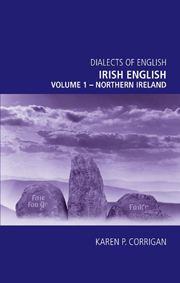5 - History, including changes in progress
Published online by Cambridge University Press: 12 September 2012
Summary
Models of language contact and language shift
Although universal and language-internal processes have operated to create the structural features of NIE/US just described, they were also generated by a combination of external factors unique to this part of the world. Of particular importance is historical contact between populations induced by various migratory processes, including colonisation. Since a language's status is not neutral but is connected with the relative socio-economic and political power of the group that uses it, contact between communities can lead to different results. If two groups have equal status, then bilingualism is generally the outcome, with speak-ers shifting between the two languages effortlessly. Sometimes, a very particular type of bilingualism occurs, originally defined by Ferguson (1959) as ‘diglossia’ in which the languages develop different functions. One of them (termed the H(igh) language) will be favoured in public contexts or ‘domains’ while the other (the L(ow) language) is used privately. This state of affairs can endure and, indeed, more than one H or L variety can be used. Other types of contact can lead to a scenario in which the power differential between the two languages is so great that, pragmatically at least, simply being monolingual in the one which has most status becomes an advantage. This situation generally leads to speakers of the language with the lowest status learning the one with more ‘cultural, economic and social capital’ (Bourdieu 1982).
- Type
- Chapter
- Information
- Irish English, volume 1 - Northern Ireland , pp. 104 - 131Publisher: Edinburgh University PressPrint publication year: 2010



